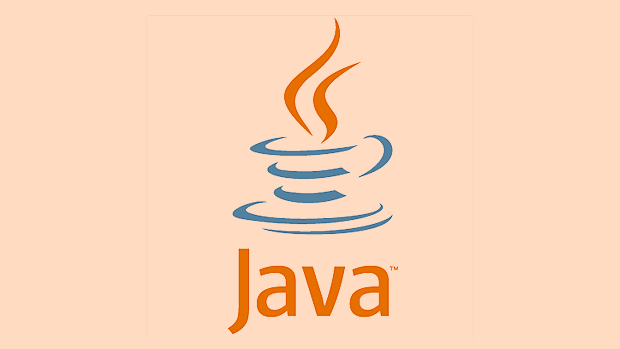There are three ways to copy files in Java. The first is to use FileInputStream and FileOutputStream, which is suitable for Java 7 and earlier versions. By reading byte streams and writing to the target file, it is suitable for understanding the underlying principles but has limited performance; the second is to use Files.copy(), which is recommended for Java 7 and above versions. The code is concise and efficient, and FileChannel is used internally and supports whether to overwrite existing files; the third is to use Apache Commons IO tool class, which is suitable for projects that have been introduced to this library. It has simple operation but requires third-party dependencies to be added. The selection method should be determined based on the Java version, whether third-party libraries are allowed and specific performance requirements. New projects are recommended to use Files.copy() first.

Copying files in Java is a common requirement, especially when handling file input and output (IO) operations. Java provides a variety of ways to implement this function, from traditional IO streaming to NIO (New IO) class libraries, you can complete tasks. The following are several practical methods that are suitable for use in different scenarios.

Using FileInputStream and FileOutputStream
This is the most basic way to copy files in Java, suitable for earlier versions of Java (including Java 7 and earlier). Although it is a little cumbersome to write, it is clear in logic and suitable for understanding the underlying principles.
try (FileInputStream fis = new FileInputStream("source.txt");
FileOutputStream fos = new FileOutputStream("destination.txt")) {
byte[] buffer = new byte[1024];
int length;
while ((length = fis.read(buffer)) > 0) {
fos.write(buffer, 0, length);
}
} catch (IOException e) {
e.printStackTrace();
}- Note : Using try-with-resources is the recommended practice, which can automatically close the stream.
- The buffer size is recommended to be set to 1024 or 8192 bytes, depending on the situation. Too small will affect efficiency, and too large will waste memory.
- This method is not suitable for large files because it is single threaded to read and write block by block, and its performance is limited.
Using Files.copy() (recommended by Java 7)
If you are using Java 7 or higher, you can use the copy method in java.nio.file.Files class. The code is concise, easy to read, and has better performance.

Path source = Paths.get("source.txt");
Path destination = Paths.get("destination.txt");
try {
Files.copy(source, destination, StandardCopyOption.REPLACE_EXISTING);
} catch (IOException e) {
e.printStackTrace();
}-
StandardCopyOption.REPLACE_EXISTINGmeans that if the target file already exists, replace it. - If you do not want to overwrite existing files, you can omit the third parameter.
- This method uses an efficient file channel (FileChannel) internally, which is suitable for most daily use scenarios.
Using Apache Commons IO (third-party library)
If you have introduced Apache Commons IO into your project, you can directly call its tool class to simplify operations:
File source = new File("source.txt");
File dest = new File("destination.txt");
try {
FileUtils.copyFile(source, dest);
} catch (IOException e) {
e.printStackTrace();
}- This method is well encapsulated and done with one line of code.
- Suitable for projects that develop quickly or require low performance.
- Additional dependencies need to be added, such as Maven:
<dependency> <groupId>commons-io</groupId> <artifactId>commons-io</artifactId> <version>2.11.0</version> </dependency>
Basically these commonly used methods. Which one you choose depends on your Java version, whether you allow the introduction of third-party libraries, and specific application scenarios. If it is a new project, it is recommended to use
Files.copy()first, which is both concise and efficient.
The above is the detailed content of How to copy a file in Java?. For more information, please follow other related articles on the PHP Chinese website!

Hot AI Tools

Undress AI Tool
Undress images for free

Undresser.AI Undress
AI-powered app for creating realistic nude photos

AI Clothes Remover
Online AI tool for removing clothes from photos.

Clothoff.io
AI clothes remover

Video Face Swap
Swap faces in any video effortlessly with our completely free AI face swap tool!

Hot Article

Hot Tools

Notepad++7.3.1
Easy-to-use and free code editor

SublimeText3 Chinese version
Chinese version, very easy to use

Zend Studio 13.0.1
Powerful PHP integrated development environment

Dreamweaver CS6
Visual web development tools

SublimeText3 Mac version
God-level code editing software (SublimeText3)
 Differences Between Callable and Runnable in Java
Jul 04, 2025 am 02:50 AM
Differences Between Callable and Runnable in Java
Jul 04, 2025 am 02:50 AM
There are three main differences between Callable and Runnable in Java. First, the callable method can return the result, suitable for tasks that need to return values, such as Callable; while the run() method of Runnable has no return value, suitable for tasks that do not need to return, such as logging. Second, Callable allows to throw checked exceptions to facilitate error transmission; while Runnable must handle exceptions internally. Third, Runnable can be directly passed to Thread or ExecutorService, while Callable can only be submitted to ExecutorService and returns the Future object to
 Asynchronous Programming Techniques in Modern Java
Jul 07, 2025 am 02:24 AM
Asynchronous Programming Techniques in Modern Java
Jul 07, 2025 am 02:24 AM
Java supports asynchronous programming including the use of CompletableFuture, responsive streams (such as ProjectReactor), and virtual threads in Java19. 1.CompletableFuture improves code readability and maintenance through chain calls, and supports task orchestration and exception handling; 2. ProjectReactor provides Mono and Flux types to implement responsive programming, with backpressure mechanism and rich operators; 3. Virtual threads reduce concurrency costs, are suitable for I/O-intensive tasks, and are lighter and easier to expand than traditional platform threads. Each method has applicable scenarios, and appropriate tools should be selected according to your needs and mixed models should be avoided to maintain simplicity
 Best Practices for Using Enums in Java
Jul 07, 2025 am 02:35 AM
Best Practices for Using Enums in Java
Jul 07, 2025 am 02:35 AM
In Java, enums are suitable for representing fixed constant sets. Best practices include: 1. Use enum to represent fixed state or options to improve type safety and readability; 2. Add properties and methods to enums to enhance flexibility, such as defining fields, constructors, helper methods, etc.; 3. Use EnumMap and EnumSet to improve performance and type safety because they are more efficient based on arrays; 4. Avoid abuse of enums, such as dynamic values, frequent changes or complex logic scenarios, which should be replaced by other methods. Correct use of enum can improve code quality and reduce errors, but you need to pay attention to its applicable boundaries.
 Understanding Java NIO and Its Advantages
Jul 08, 2025 am 02:55 AM
Understanding Java NIO and Its Advantages
Jul 08, 2025 am 02:55 AM
JavaNIO is a new IOAPI introduced by Java 1.4. 1) is aimed at buffers and channels, 2) contains Buffer, Channel and Selector core components, 3) supports non-blocking mode, and 4) handles concurrent connections more efficiently than traditional IO. Its advantages are reflected in: 1) Non-blocking IO reduces thread overhead, 2) Buffer improves data transmission efficiency, 3) Selector realizes multiplexing, and 4) Memory mapping speeds up file reading and writing. Note when using: 1) The flip/clear operation of the Buffer is easy to be confused, 2) Incomplete data needs to be processed manually without blocking, 3) Selector registration must be canceled in time, 4) NIO is not suitable for all scenarios.
 How Java ClassLoaders Work Internally
Jul 06, 2025 am 02:53 AM
How Java ClassLoaders Work Internally
Jul 06, 2025 am 02:53 AM
Java's class loading mechanism is implemented through ClassLoader, and its core workflow is divided into three stages: loading, linking and initialization. During the loading phase, ClassLoader dynamically reads the bytecode of the class and creates Class objects; links include verifying the correctness of the class, allocating memory to static variables, and parsing symbol references; initialization performs static code blocks and static variable assignments. Class loading adopts the parent delegation model, and prioritizes the parent class loader to find classes, and try Bootstrap, Extension, and ApplicationClassLoader in turn to ensure that the core class library is safe and avoids duplicate loading. Developers can customize ClassLoader, such as URLClassL
 Exploring Different Synchronization Mechanisms in Java
Jul 04, 2025 am 02:53 AM
Exploring Different Synchronization Mechanisms in Java
Jul 04, 2025 am 02:53 AM
Javaprovidesmultiplesynchronizationtoolsforthreadsafety.1.synchronizedblocksensuremutualexclusionbylockingmethodsorspecificcodesections.2.ReentrantLockoffersadvancedcontrol,includingtryLockandfairnesspolicies.3.Conditionvariablesallowthreadstowaitfor
 Handling Common Java Exceptions Effectively
Jul 05, 2025 am 02:35 AM
Handling Common Java Exceptions Effectively
Jul 05, 2025 am 02:35 AM
The key to Java exception handling is to distinguish between checked and unchecked exceptions and use try-catch, finally and logging reasonably. 1. Checked exceptions such as IOException need to be forced to handle, which is suitable for expected external problems; 2. Unchecked exceptions such as NullPointerException are usually caused by program logic errors and are runtime errors; 3. When catching exceptions, they should be specific and clear to avoid general capture of Exception; 4. It is recommended to use try-with-resources to automatically close resources to reduce manual cleaning of code; 5. In exception handling, detailed information should be recorded in combination with log frameworks to facilitate later
 How does a HashMap work internally in Java?
Jul 15, 2025 am 03:10 AM
How does a HashMap work internally in Java?
Jul 15, 2025 am 03:10 AM
HashMap implements key-value pair storage through hash tables in Java, and its core lies in quickly positioning data locations. 1. First use the hashCode() method of the key to generate a hash value and convert it into an array index through bit operations; 2. Different objects may generate the same hash value, resulting in conflicts. At this time, the node is mounted in the form of a linked list. After JDK8, the linked list is too long (default length 8) and it will be converted to a red and black tree to improve efficiency; 3. When using a custom class as a key, the equals() and hashCode() methods must be rewritten; 4. HashMap dynamically expands capacity. When the number of elements exceeds the capacity and multiplies by the load factor (default 0.75), expand and rehash; 5. HashMap is not thread-safe, and Concu should be used in multithreaded







